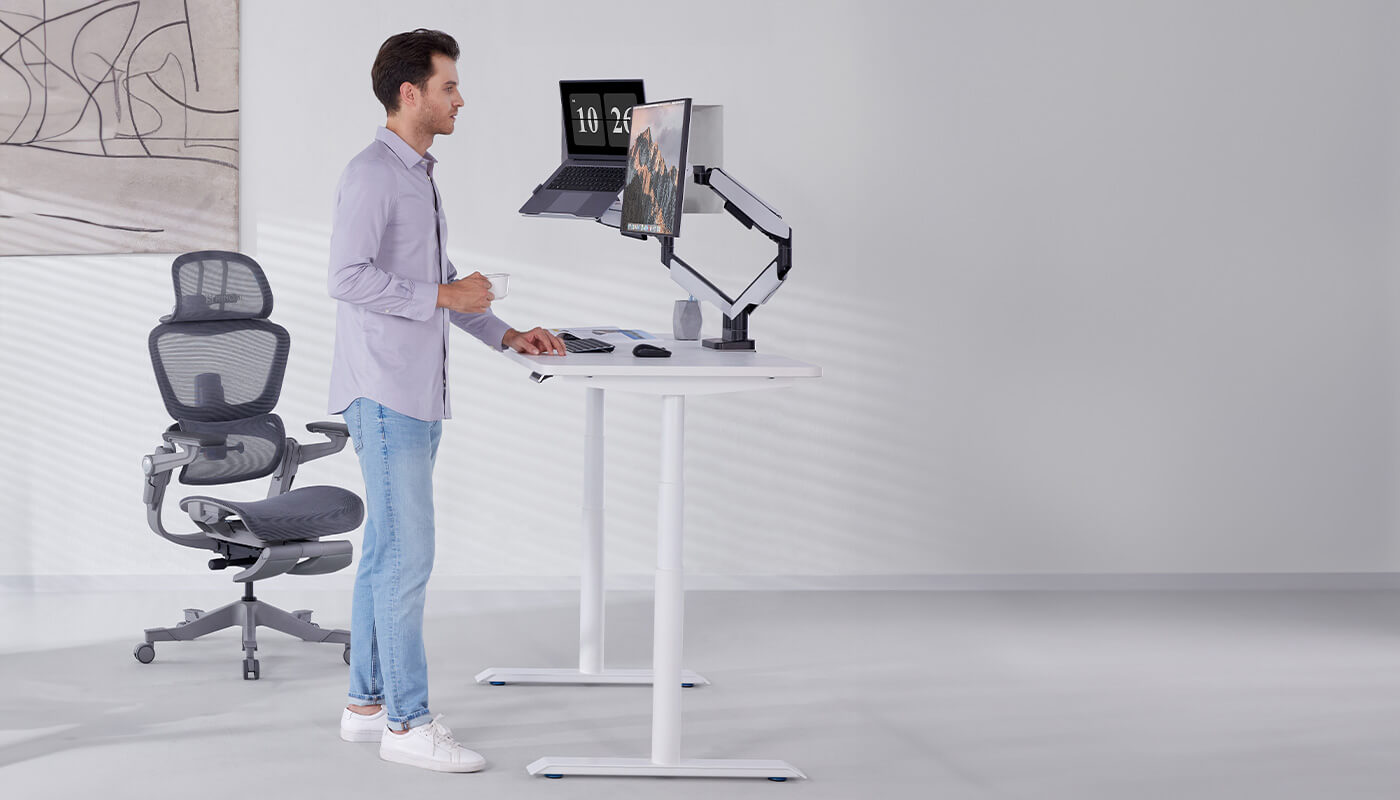In today's fast-paced digital world, many of us find ourselves spending long hours at our desks, whether in an office or at home. The rise of remote work has further amplified this sedentary lifestyle, as we find ourselves glued to our screens for extended periods. However, this shift towards desk-bound work has come with its fair share of health concerns.
The good news is that there's a simple solution to counteract the negative effects of prolonged sitting: standing up from your desk regularly. In this comprehensive guide, we will explore the recommendations for how often you should stand up from your desk, as well as practical tips for integrating more movement into your work routine.
In today's digital age, many people spend long hours sitting at desks, dealing with the demands of office work or the growing popularity of home offices. The rise in remote work has further increased this trend, keeping us tied to our desks and screens for extended periods. Regrettably, this shift to a more sedentary work lifestyle poses significant health hazards.
Thankfully, there exists a simple yet effective approach to reducing the negative impacts of prolonged sitting: incorporating regular standing breaks into your routine. This resource provides insight from experts on the ideal frequency for standing breaks and presents practical methods for integrating more physical activity into your daily work schedule.
How Often Should You Stand Up
Finding the optimal frequency for taking standing breaks requires carefully balancing periods of sitting and standing. Health experts recommend integrating regular movement breaks into the day, following a general guideline: maintaining a sitting-to-standing ratio of 1:1 to 1:3. In practice, this might involve standing for approximately 15 minutes per hour or choosing a 45-minute standing session every three hours during an 8-hour workday.

Recognizing the uniqueness of individual physiology is crucial as what works for one person may not work for another. Therefore, it's important to tune into your body's needs and adjust your standing schedule accordingly to find the most beneficial and comfortable routine for you.
The Risks and Realities of Prolonged Sitting
Numerous scientific studies have shed light on the health risks associated with a sedentary lifestyle. Prolonged sitting has been linked to an increased risk of cardiovascular disease, diabetes, obesity, musculoskeletal disorders, and even mental health issues.
Numerous scientific studies have shed light on the health risks associated with a sedentary lifestyle. Prolonged sitting has been linked to an increased risk of cardiovascular disease, diabetes, obesity, musculoskeletal disorders, and even mental health issues.
The human body benefits from movement, but the frequency of standing up from your desk becomes a critical question when we spend long periods being immobile. Prolonged sedentary behavior can result in weakened muscles, decreased blood circulation, and a decline in general health. To shed light on the dangers of prolonged sitting, we have compiled a comprehensive examination of the risks linked to excessive time spent seated.
Cardiovascular Diseases
Extended sitting periods are directly linked to a higher risk of heart disease and stroke. The lack of movement leads to decreased blood flow and lower levels of fat-burning activity, contributing to cardiovascular problems.
Type 2 Diabetes
The sedentary behaviour associated with prolonged sitting can increase the risk of developing type 2 diabetes due to insulin resistance caused by continuous lack of physical activity.
Obesity
Obesity is a significant risk when movement is minimal, and calorie intake exceeds the very low energy expenditure of sitting. The imbalance leads to weight gain and associated health issues.
Musculoskeletal Disorders
Chronic back pain, neck strain, and reduced flexibility are common results of sitting for too long, often exacerbated by poor posture and lack of movement.
Mental Health Issues

Depression and anxiety risks are heightened with prolonged sitting, partly due to the isolating and static nature of sedentary lifestyles.
Weakened Muscles and Bones
Muscle atrophy and weakened bones are consequences of the human body's lack of movement, leading to poor posture and reduced bone density.
Poor Blood Circulation
Sitting for extended periods slows down blood circulation, affecting overall health and contributing to the risk of cardiovascular diseases.
It's important to break the cycle of sedentariness and incorporate regular movement into our daily lives. By doing so, we can mitigate the negative effects of sitting and improve our overall health and well-being.
Practical Tips for Integrating Standing into Your Routine
Certainly! Here's a rephrased version of the text:
Now that we understand the importance of regular movement, let's explore practical guidance on how often you should stand up from your desk and effective ways to integrate more standing breaks into your daily work schedule.
Set Reminders

With the demands of work, it's easy to lose track of time and forget to take breaks. Set reminders on your phone or computer to prompt you to stand up and move every 30 minutes. Use break software or timer reminders to help you stay on track.
Use a Standing Desk

Investing in a standing desk can revolutionize your work routine. These desks allow you to easily switch between sitting and standing positions, promoting movement throughout the day. Choose a standing desk that offers ergonomic features and adjustable height settings for optimal comfort.
Take Active Breaks

Instead of scrolling through social media during your breaks, use that time to engage in light physical activity. Take a short walk, do some stretching exercises, or perform desk exercises to keep your body active and energized.
Optimize Your Workspace Setup

Encourage Standing Meetings

Whenever possible, suggest standing meetings instead of sitting around a conference table. Standing meetings not only promote movement but also tend to be more efficient and productive.
Conclusion
Breaking the cycle of prolonged sitting is essential for our health and overall well-being. A critical aspect of this change involves understanding how often you should stand up from your desk. This includes incorporating regular standing breaks to effectively counteract the health risks associated with a sedentary lifestyle, consequently boosting our productivity. By following the recommended frequency and employing practical methods such as setting reminders, using standing desks, taking active breaks, optimizing your workspace for improved ergonomics, and investing in ergonomic solutions, you can establish a healthier work routine that enhances both your physical and mental well-being.
It is important to prioritize your health and actively work on improving your work habits. Begin by taking the crucial step of standing up from your desk at regular intervals and incorporating standing breaks. Gradually increase the duration of these breaks. Each effort to include standing breaks and enhance your work routine is a significant step forward. Embrace the many benefits of regular movement and ergonomic improvements, which will lead to a more dynamic and efficient work life.
